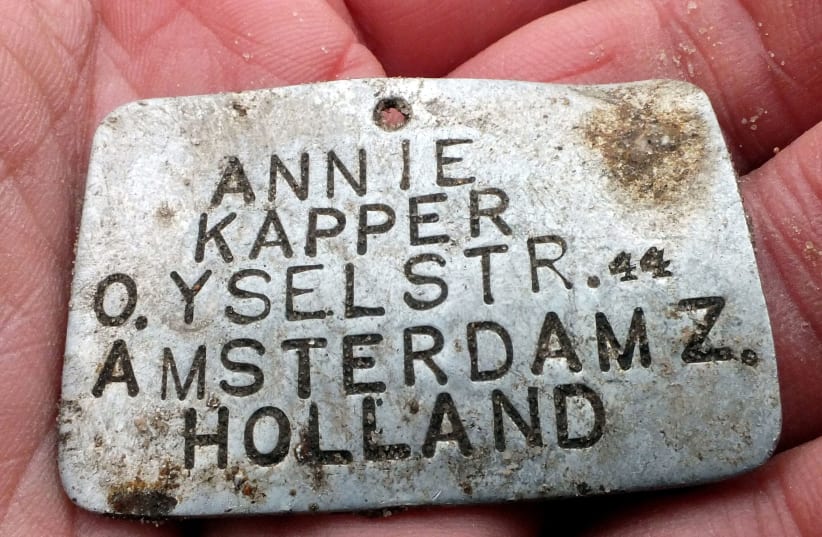Four metal identity tags belonging to young children murdered at the Sobibor extermination camp were uncovered in a joint excavation project carried out by Yoram Haimi from the Israel Antiquities Authority, Wojtek Mazurek from Poland and Ivar Schute from Holland, the IAA announced on Tuesday.
When the Israeli archaeologist traveled to visit the Sobibor extermination camp for the first in 2007, his hope was to find out more about the fate of his uncle. Little did he know that the visit would mark the beginning of a decade-long professional journey excavating the area and uncovering dozens of thousands of the victims’ personal belongings, including, in the most recent instance, metal identity tags of children murdered in the camp.
The four tags carried the children’s names, date of birth and hometown – Amsterdam.
“With this information, we were able to find more about them by consulting the relevant archives,” Haimi explained to The Jerusalem Post. The researchers contacted the Herinneringscentrum Kamp Westerbork, a former transit camp where Dutch Jews were gathered before being sent east, that today serves as a research center and memorial.
Seeing the pictures of smiling children and thinking of their terrible end has been especially hard, the archaeologist said.
Lea Judith De La Penha was only six when she was killed. Her pendant was found near the camp’s railway platform. Deddie Zak was just a little older than her. He was deported to Sobibor on a train that became notorious for the large number of children that carried – some 1,300, ages 4 to 8 – many of them alone.
“We found his tag in the area of a crematorium, which probably means that his body was burned while wearing it. This is all that remains of him,” the researcher said.
Annie Kapper, age 12, was deported to Sobibor with her family on March 30, 1943. All 1,255 Jews who were on the train were immediately sent to the gas chambers. Her tag was found near one of the mass graves in the camp. On the same train was also 11-year-old David Juda Van der Velde, whose aluminum tag was uncovered in the area of one of the chambers.
About 250,000 Jews were killed at Sobibor, most of them immediately upon arrival. The camp was destroyed by the Nazis after the prisoners attempted a revolt in October 1943.
Haimi explained that when his team started to work, very little of the camp remained. Over the years, they managed to uncover the site of the gas chambers, the crematoria, some of the mass graves and even a tunnel that the prisoners were trying to excavate in order to escape along with some digging tools.
Moreover, the archaeologists unearthed some 75,000 objects.
“We found plates, forks, jewelry, all sorts of items that the prisoners would bring with them,” he said. “In a well, we found some 20 golden wedding rings that the victims chose to throw away to avoid leaving them in the hands of the Nazis.”
Haimi has not been able to find information about his uncle.
“He was living in Paris and my mother was in Morocco, the contacts were difficult. All we have left is a postcard,” the researcher said. “I found out his name and some other information at the Holocaust Memorial in Paris, but nothing in Sobibor. I knew it was going to be almost impossible, but I hoped nonetheless.”
